My Egypt Adventure and Transit of the Suez Canal – Part Four: The Suez Canal
6 August 2013 Leave a comment
Part Four: The Suez Canal
Our transit of the Suez Canal began at 0100 hours (1:00 a.m.). By daybreak, the convoy was well underway and I had the opportunity to see the sights on both sides of the canal.
From my newsletter of November 1990:
“After Cairo I got an opportunity to transit the Suez Canal on a merchant ship. This was a fascinating experience primarily because of the importance of the role of the Suez Canal in world commerce and its role in history. It is the only fast way to get between Europe and the Middle East/Far East by sea. On one side is the Sinai Desert and the other side is developed land, much of which is used by the Egyptian military. During the transit I saw many remnants of the Egypt-Israel wars, including blown up and abandoned buildings, abandoned airbases and abandoned vehicles.
“Ships transiting the canal are formed into convoys and are guided and controlled by the Egyptians from the time they arrive in Port Said (the Mediterranean entrance to the canal also known as “Port Marlboro”) to the time they are released at Port Suez (at the top of the Gulf of Suez). These people include immigration, health, customs and canal officials, vendors, agents and their assistants, electricians (for the canal floodlight) and mooring laborers (the “boatmen”). They can hold up or expedite a canal transit at will. Additionally, when the ship is moored in Port Said awaiting transit, “bumboats” containing vendors selling souvenirs surround the ship, trying to get on board.
“For the ship’s master, the object is to get through the canal as quickly as possible. And, one of the best means of getting expeditiously through the transit is to prevent the occurrence of any reason to delay the transit. This is accomplished by giving the canal officials and others a “present”, which is usually a carton of Marlboro cigarettes (in the red box). The giving of “presents” is usually preceded by someone saying, “Do you have my present, Captain?” There is a saying among those who have transited the canal: “Give ’em a carton of Marlboros and things move fast”. Otherwise a document may be lost, or something could be “discovered” wrong with the ship that could slow down the transit.
“On the ship I was on, the Suez Canal Authority suggested that the ship’s trim was not in line with canal standards. The problem was resolved when the master passed out the cartons of Marlboros (the Egyptians want only Marlboros, reds, in the box; anything else, especially Kools, would make them unhappy). On my ship, the master gave out a total of about thirty cartons, which is about average. Why all the cigarettes? Cigarettes, especially Marlboros, are like currency. And incomes of some of these people (especially laborers and vendors) are so low that selling cigarettes to Marlboro-hungry Egyptians is a lucrative source of income. (While in Cairo, it seemed everyone who was smoking was smoking Marlboros (reds, in the box).) Just before we got underway, a crewman on the pilot boat bringing the Suez pilot was yelling at our ship, “Captain, Captain, seegarets pleeze, seegarets for food!”
Besides cigarettes the Egyptians usually manage to get American-made toiletries and similar goods from the masters of the ships transiting the canal. In addition, interestingly enough, the canal pilot can also get a special “present” of a bottle of liquor, usually top end. Ships that regularly transit the canal have a bonded storage containing these goods. It is also interesting to note that the cigarettes given out are marked “For shipboard use only” on the box.
The canal is only wide enough for one-way traffic. At Great Bitter Lake, about two-thirds the way down, both the southbound and northbound convoys rendezvous. Once the southbound convoy has exited the canal, the northbound proceeds on to Port Said. The southbound convoy proceeds to, and ends at, Port Suez, where the Egyptian pilot and the boatmen disembark the ship. The ships in the convoy then break up, heading into the Gulf of Suez and eventually the Red Sea.
Below: Views from the bridge of the Ashley Lykes.
Below: Sinai (east) side of the canal. “Road to Nowhere” in left picture; military facility in the right. Note the Mosque, lower left corner.
Below: West side of the canal. Left picture shows crater created by a blast. Note the unfinished structures in the right picture.
Below: Contrast the east side (left) and west side (right) of the canal. Note the Mosque in left picture.
Below: Goods on display for sale brought on board by the boatmen (left). On the right, the Suez pilot.
Below: Ships at anchor awaiting the southbound convoy in Great Bitter Lake (left). At right, a Mosque in Port Suez.
Below: The convoy breaking up as it enters the Gulf of Suez (left). At right is a map of the canal.
From my newsletter:
“A few more observations about life in Egypt: Traffic is not regulated as in the States. Signals are only advisory. During rush hour (which seems to be all day), traffic police try to control the cars, with mild success – sometimes the cars obey. Additionally, it is not unusual to see mule drawn carts in the middle of city streets.
“I also got the impression that drivers, when given driving lessons, were taught first on the use of the horn, and how to get the most out of it. Horns were heard at all hours, even when there was no need for them. The message given by a horn is “get out of the way”. And when someone does not get out of the way an accident results. And when an accident occurs, it is not resolved in the usual way by exchanging insurance company names. Not in Egypt. First fault has to be determined. And this is accomplished by shouting matches between the two parties involved. But it is not only two people shouting to each other. The shouting is so loud, a crowd gathers, picks sides, and joins the debate. I actually witnessed this in an accident between a bus and a taxicab. To their credit, the passengers did not get involved, just the drivers and the onlookers.”
I found visiting Cairo and transiting the Suez Canal a fascinating and most memorable experience; something to be remembered for a long time. I do not think much has changed vis-a-vis the Suez Canal transit based on recent Google searches. However, I did observe, and this is back in 1990, that Egypt’s history was pivotal in the development of the world’s civilizations. The country is rich in resources and tradition, and should be a great place to visit. However, things need to be fixed, and while not commenting on the current political situation, I do hope it is resolved soon, so that Egypt can eventually become economically and politically healthy and people can visit and enjoy what Egypt has to offer.
End of Part Four
End of my Egypt Adventure
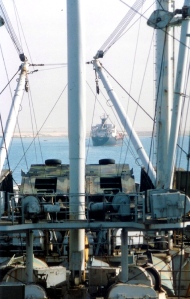
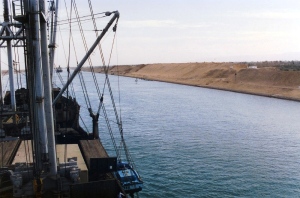
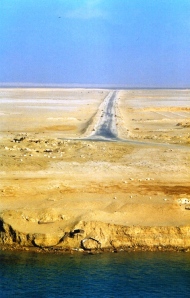
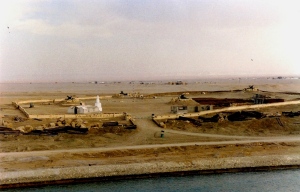
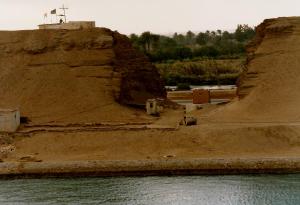


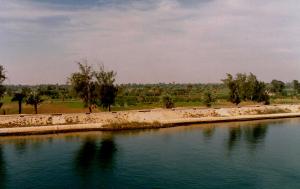
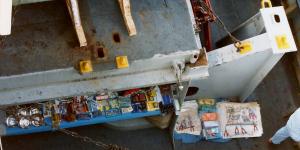
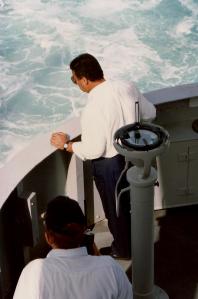
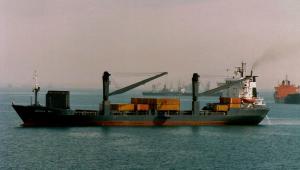
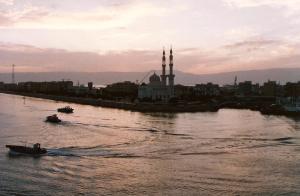

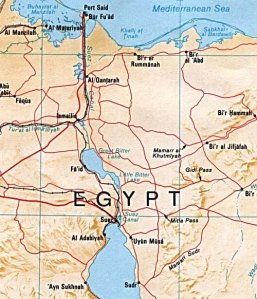
Recent Comments